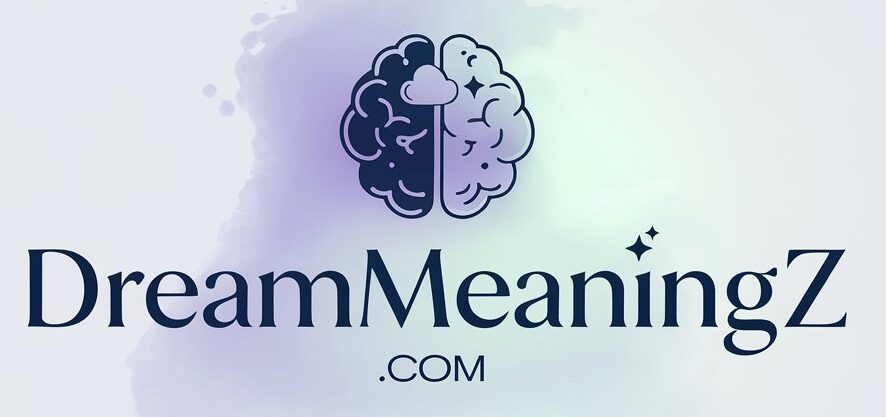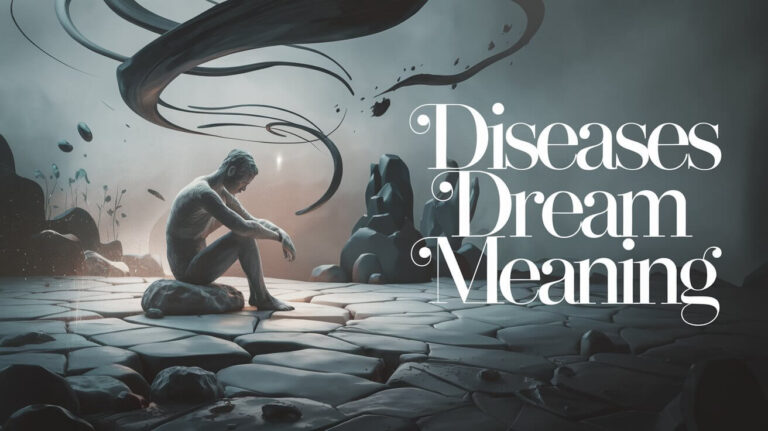Emotions Dream Meaning

Dreams open a window into our subconscious, showing our deepest emotions. They are not just symbols; they show our true feelings, even when we hide them during the day. Studies show that dreams often have negative emotions like fear, anxiety, and sadness more than positive ones.
At the heart of every dream are emotions, from strong to subtle. Experts say dreams let us express feelings we can’t in real life. This helps us deal with complex emotions like depression and guilt. Knowing our dreams’ emotional meanings is key, as they help us process our feelings.
Common Emotional States in Dreams
Dreams are a mix of emotions, showing the complex human mind. While dreams can be joyful and loving, they often show negative feelings more.
Positive Emotional Expressions
Dreams can make us feel love, awe, and joy. These feelings can stay with us and help us be more flexible and resourceful in life.
Negative Emotional Patterns
Anxiety is the most common dream emotion, followed by fear, anger, and sadness. These feelings can show deep emotions caused by recent events or long-standing issues.
Mixed Emotional Experiences
Dreams can mix different emotions, showing the complexity of human feelings. This mix can include both positive and negative feelings, showing how we process emotions while we sleep.
The emotions in dreams are often stronger than real life. This lets us explore our full range of feelings. It helps us grow and understand ourselves better.
Scientific Perspective on Dream Emotions
Dream emotions have always intrigued scientists in dream research, neuroscience, and sleep. Ernest Hartmann called dreams “picture-metaphors” for our deepest emotions. He believed dream emotions help us remember important events.
Emotions in dreams help us connect experiences to our memories. Studies show our brain’s emotional centers are very active during dreams. This makes dreams feel intense and real.
A study by Cristina Marzano and colleagues at the University of Rome used EEG to study brain waves during sleep. They found low-frequency theta waves in the frontal lobes are key for remembering dreams.
Matthew Walker’s team at UC Berkeley found that less REM sleep makes understanding emotions harder. A patient with Charcot-Wilbrand Syndrome lost the ability to dream due to brain damage. This shows how important dreams are for our emotions.
| Findings | Implications |
|---|---|
| Emotional memory trade-off (negative images maintained at the cost of neutral memories) was only replicated in Dream-Recallers, not in Non-Dream-Recallers. | Suggests the importance of dreaming in emotional memory consolidation and regulation. |
| Sleep-dependent reductions in emotional reactivity were replicated only in Dream-Recallers, not in Non-Dream-Recallers. | Highlights the role of dreaming in the processing and regulation of emotions. |
| The more positive the dream report, the more positive the next-day emotional reactivity is compared to the night before. | Indicates the therapeutic benefits of positive dream experiences in emotional well-being. |
These studies from dream research, neuroscience of dreams, and emotional processing in sleep show dreams are vital. They help us remember, regulate emotions, and integrate experiences into our minds.
Fear and Anxiety in Dreams
Fear and anxiety are common in dreams. These dreams, known as “nightmare analysis” or “anxiety dreams,” offer insights into our subconscious. They let us deal with fears and anxieties safely, when it’s hard to face them awake.
Processing Fear Through Dreams
Recurring anxiety dreams might mean we need to work on issues during the day. Dreams let us face fear safely, which can make us stronger in real life. By tackling challenges in dreams, we learn to handle our fears better every day.
Anxiety-Related Dream Symbols
Dreams often use symbols like being chased, falling, or being trapped to show anxiety. These symbols reveal what’s worrying us. Understanding them helps us grasp our emotions and tackle the problems that bother us.
Coping Mechanisms Within Dreams
Dreams show how we deal with fear and anxiety. We might ask for help, change the dream, or find a way to beat the challenges. Seeing these strategies in dreams can help us use them in our waking lives. This leads to better emotional health and sleep.
Love and Joy Dream Manifestations
Dreams about love and joy can reveal a lot about our feelings and relationships. They show the happiness we feel in real life or help us when we’re missing it. These dreams can be a sign of positive emotions and fulfillment.
Joyful dreams often mean we feel accepted and belong. They show how happy we can be and how deep our emotional connections are. Dreams filled with joy suggest we’re at peace and emotionally balanced.
Dreams about love might show we want closer relationships or more intimacy. These dreams can be about friendship or romance. They help us understand our emotional needs and desires.
Research shows joy and happiness appear in about 20% of dreams. Dreams of peace and contentment make up about 15% of dreams. This shows how important dreams are for our emotional health.
| Dream Emotion | Prevalence in Dreams | Potential Symbolic Meaning |
|---|---|---|
| Joy | 20% of reported dreams | Happiness, fulfillment, emotional healing, and growth |
| Contentment | 15% of reported dreams | Inner peace, emotional balance, and overall well-being |
| Love | Variable, often linked to relationship dynamics | Emotional needs, desires for connection, and integration of personality aspects |
Looking into love and joy in our dreams can teach us a lot. It helps us understand our feelings, hidden desires, and personal growth. Talking to dream experts or joining online communities can help us understand these dreams better.
Emotions Dream Meaning: Core Interpretations
Dreams are full of emotions, sometimes clear and other times hidden. They let us feel deeply, even when we can’t in real life. These feelings show us our deepest desires, fears, and what’s going on inside us.
Symbolic Representations
In dreams, emotions show up as symbols. These symbols can be people, places, or things that mean something special to us. Understanding these symbols can help us see our hidden thoughts and feelings.
Emotional Processing Functions
Dreams help us deal with our emotions. Through dream analysis, we can work through hard feelings. Dreams give us a safe place to face and understand our emotions.
Anger and Frustration in Dream States
Dreams about anger and frustration often show hidden feelings or unresolved issues from our waking lives. These dreams can be a safe way to express anger we hold inside. Anger in dreams might show feelings of powerlessness or hidden problems we face every day.
Looking into why we dream about anger can help us understand our challenges and relationships better. Research shows that dreaming about anger can make us wake up feeling worried. It can mean we feel threatened or are denying ourselves something important.
Dreams about anger can include scenes like being angry and violent, or feeling angry but not showing it. Anger in dreams can be shown through fast cars, fire, or aggressive animals. These symbols often reflect our emotions from daily life.
Dreaming someone is mad at you might mean you’re feeling emotionally pressured or have hidden vulnerabilities in your relationships. Anger in dreams can also hint at relationship problems, sudden death, or needing to focus more. Tackling these issues and finding healthy ways to express anger can improve our waking lives.
Understanding our dream emotions, whether through aggressive dreams, dream anger management, or emotional release in sleep, is key to personal growth and emotional health.
Grief and Sadness Dream Symbolism
Dreams are important for dealing with grief and sadness. They offer a space to feel and work through loss. Dreams about bereavement may show we need more emotional healing.
Loss Processing Through Dreams
A study of 216 people who lost a spouse found dreams help with emotional healing (Black et al., 2021). Dreams about grief can be painful but also bring comfort and love. Keeping a dream journal can help with grieving.
Healing Through Dream Expression
Carl Jung thought dreams were key for healing and growth after loss. People grieving may have dreams that feel like visits from loved ones who have passed away. Those with more trauma symptoms after loss tend to have negative dreams.
Those carrying guilt or blame may have dreams about traumatic events. Some people wish to dream of loved ones but don’t, which is common.
Hidden Emotions Surfacing in Dreams
Dreams can show us our hidden feelings. We might try to hide certain emotions, but dreams reveal them in secret ways. By looking into our dreams, we can learn more about ourselves and find new ways to understand our feelings.
Shame often hides in the shadows, but dreams can help us face it. Dreams also help us deal with fears and worries by sorting through our day’s experiences. By facing these hidden emotions, we can grow and find better ways to handle them.
Looking closely at the feelings and symbols in our dreams can uncover hidden emotions. Talking to dream characters or noticing common themes can also reveal our deepest thoughts and feelings. By exploring the meaning of our dreams, we can gain a deeper understanding of ourselves. This helps us feel better and become more emotionally whole.
Dream Emotions and Daily Life Connection
Dreams can deeply affect how we feel and act in the real world. They can change our mood, influence our choices, and even shape our relationships. By exploring the link between dream emotions and our daily lives, we can tap into our subconscious. This can boost our emotional smarts and self-awareness.
Impact on Waking Life
Studies reveal that our waking emotions can shape our dreams. This two-way street means our day-to-day feelings can color our dreams. And our dream emotions can, in turn, affect how we feel when we’re awake.
Research shows dreams often reflect negative feelings like fear and sadness more than positive ones. This can make us feel more stressed and uneasy during the day. Yet, positive dream emotions, like joy, can greatly improve our happiness.
Emotional Integration Methods
- Dream Journaling: Writing down our dreams and their emotions helps us understand them better. This can lead to emotional growth and self-awareness.
- Meditation: Regular meditation can help us better handle our emotions in dreams and real life.
- Dream Discussions: Talking about our dreams with others can offer new insights. It helps us navigate the complex relationship between dream emotions and our daily lives.
By engaging with our dream emotions and integrating them into our waking lives, we can unlock their power. This journey can enhance our emotional intelligence, improve how we cope with challenges, and deepen our self-understanding.
Conclusion
Dreams let us feel and deal with all kinds of emotions. By understanding dream emotions, we can grow personally and become more emotionally strong. Dreams help us know ourselves and others better, making us more empathetic and compassionate.
Looking into dream emotions, like fear in chase dreams or joy in flying dreams, reveals our hidden thoughts and feelings. By tracking these emotions and their symbols, we learn more about ourselves. This helps us understand our emotional lives better.
Embracing dream emotions and learning to interpret them can change us. It helps us face our hidden feelings, deal with loss, and accept all emotions. This way, we connect our dream world with our real life. It’s a journey to deeper self-awareness and personal growth.





